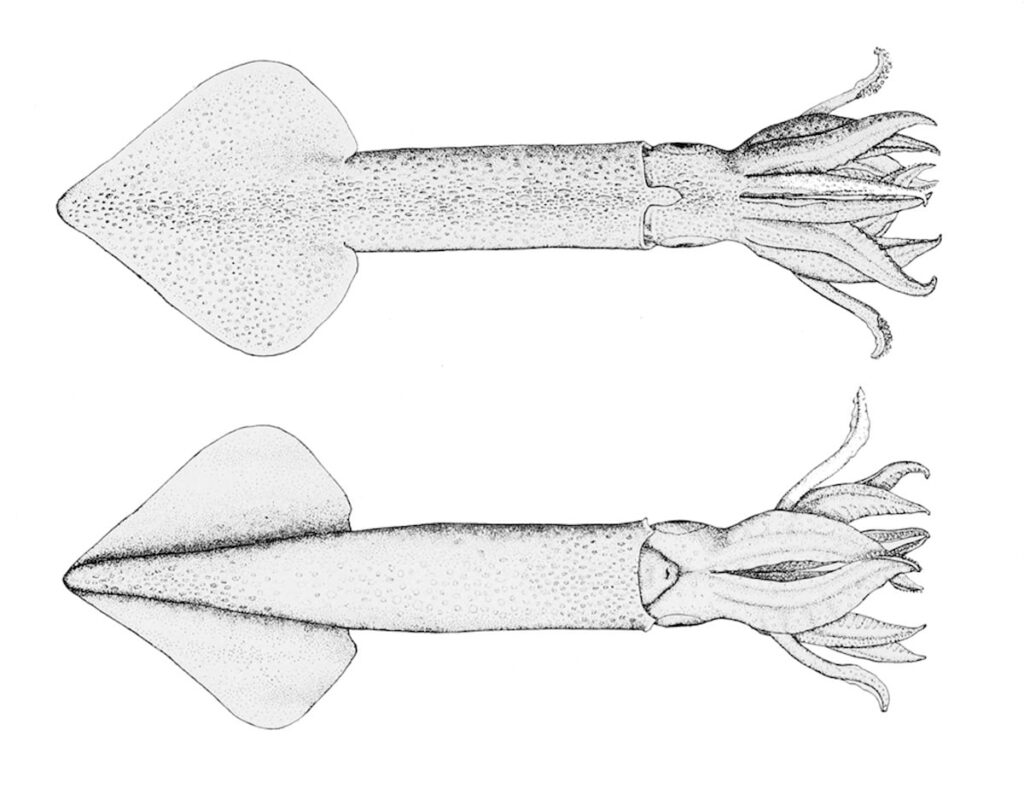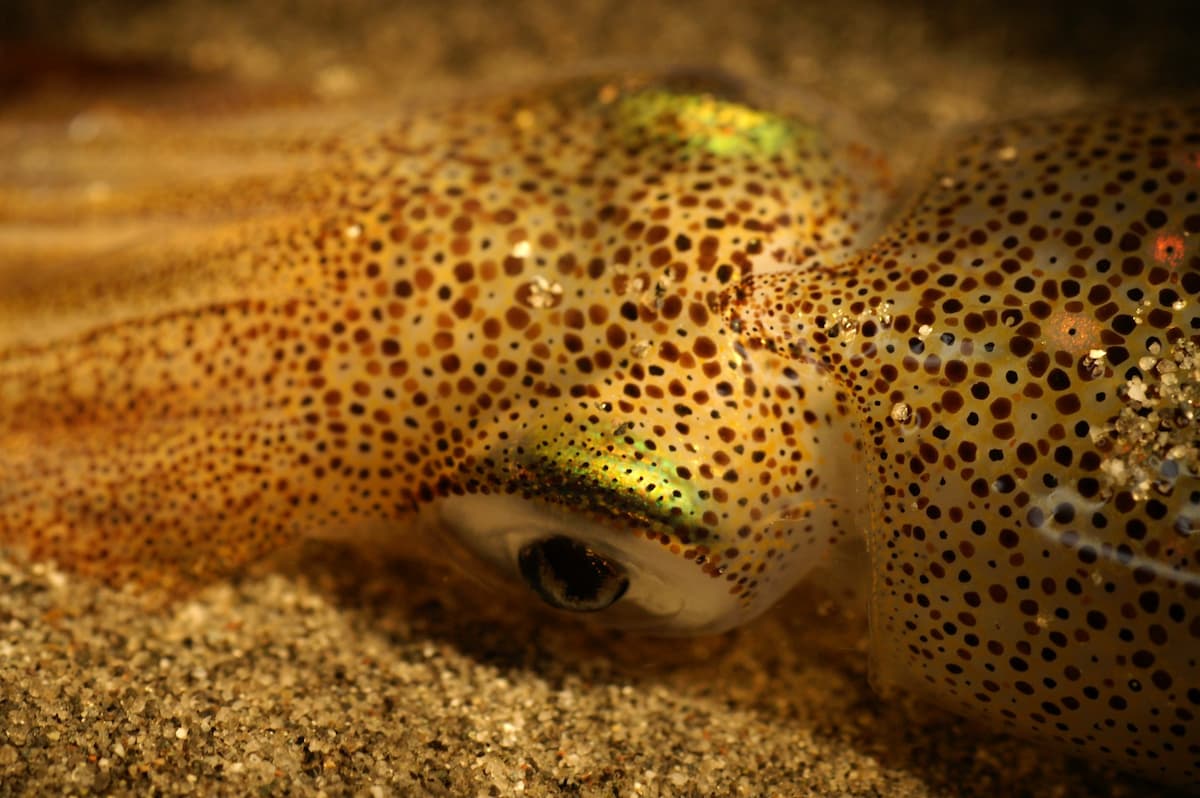So common is batter-fried squid—Calamari, as it’s labeled on seafood menus—that it may come as a surprise how unique and important this valuable species is to coastal communities and ecosystems. On the West Coast of the United States, the species behind this seafood favorite is market squid (Loligo opalescens), a member of the cephalopods, a class that includes squids and octopuses. Fishers use powerful lights to attract squid to the surface and capture them with encircling nets. Year after year, the market squid fishery is typically the largest of California’s fisheries by volume, value or both. October is National Seafood Month, so let’s take a closer look at this important fishery.
According to the National Marine Fisheries Service, managers do not know the size of the market squid population and have not confirmed that current fishing rates are sustainable. Assessments of a fish stock are usually conducted to determine a sustainable rate of fishing, but squid biology is quite different from the fish species for which sustainable yields are typically calculated. Squid are invertebrates with unusual biology and short life cycles, dying shortly after spawning. This makes assessing the status of squid populations a challenge.
Love ocean content?
Enter your email and never miss an update
again or contact 1.888.780.6763
var form = document.getElementById(’email-signup-671023e0e051c’);
form.querySelector(‘.rsform__field–email’).addEventListener(“nb:result”, e => {
var nbStatus = form.querySelector(“[name=”nb_email_status”]”);
var nbDate = form.querySelector(“[name=”nb_validation_date”]”);
var currentDate = new Date();
nbStatus.value = e.detail.result.response.result;
nbDate.value = currentDate.toISOString().split(‘T’)[0];
grecaptcha.enterprise.ready(async () => {
var tokenField = document.querySelector(“#email-signup-671023e0e051c [name=”token”]”);
var token = await grecaptcha.enterprise.execute(‘6Lcmr3shAAAAAAVRlvJrsUufEEQuItzNDlkpmB2g’, {action: ‘verify’});
tokenField.value = token;
});
});
<!– –>
Scientists and managers are exploring promising novel ways to assess squid and assure sustainability. For now, managers rely on the idea that regulating the number of squid fishing vessels and constraining fishing to only five days a week will allow enough squid spawning to support the fishery. As part of much-needed improvements to the California Squid Fishery Management Plan currently being considered, managers are recommending slightly shortening the fishing week to ensure harvest pressure on squid is sustainable. This action has Ocean Conservancy’s strong support.
Those aren’t the only challenges the management of market squid is facing. Decisions on several other critical issues are set for later this year. Those include:
- Considering climate: Changing ocean conditions are shifting where and how well squid can reproduce and sustain fishing. Fishery managers need to track and forecast changes in water temperature, currents and upwelling to ensure fishing pressure matches squid productivity. We are urging managers to rapidly test and apply new science-based forecasts in harvest control rules.
- Calamari for all: Squid are a favorite in the diets of many fish, birds and marine mammals. Managers should consider the needs of the entire food web to protect squid’s role as a forage species. Fishery management control rules and limiting the fishing week help ensure that enough squid are left in the ocean for prey species.
- Fishery on the move: Calls are rising to allow fishing well north of traditional squid fishing areas where squid are now appearing more frequently. While squid do appear to be moving north, allowing fishing for market squid in these new areas could upend current management, which is based on a fixed fishing fleet and a single market.
- Lighting the night: Powerful lights used by squid fishers to attract and concentrate squid alter the natural patterns of light and dark relied on by nocturnal seabirds to feed and protect their young. California should prohibit nighttime fishing around key breeding sites of the Scripps’s Murrelet and other nocturnal seabirds.
- Hitting bottom: Heavy squid nets can contact the seafloor and damage both marine habitat and the beds of newly laid squid eggs. A net accessory called a “rib line” is used by many fishers to control bottom contact, and Ocean Conservancy is supporting a recommendation to make rib lines mandatory in management plan discussions this fall.

if(typeof window.oc_media_credits === ‘undefined’) {
window.oc_media_credits = {};
}
window.oc_media_credits[76322] = “Wikimedia Commons”;
Market squid is a critically important fishery in California and a beloved staple on restaurant menus across the country. That’s why state and federal managers need to remain committed to sustainable management of this fishery and to providing better tools to help managers adapt to climate impacts.
The post Calamari Poses Sustainability and Climate Challenges appeared first on Ocean Conservancy.

